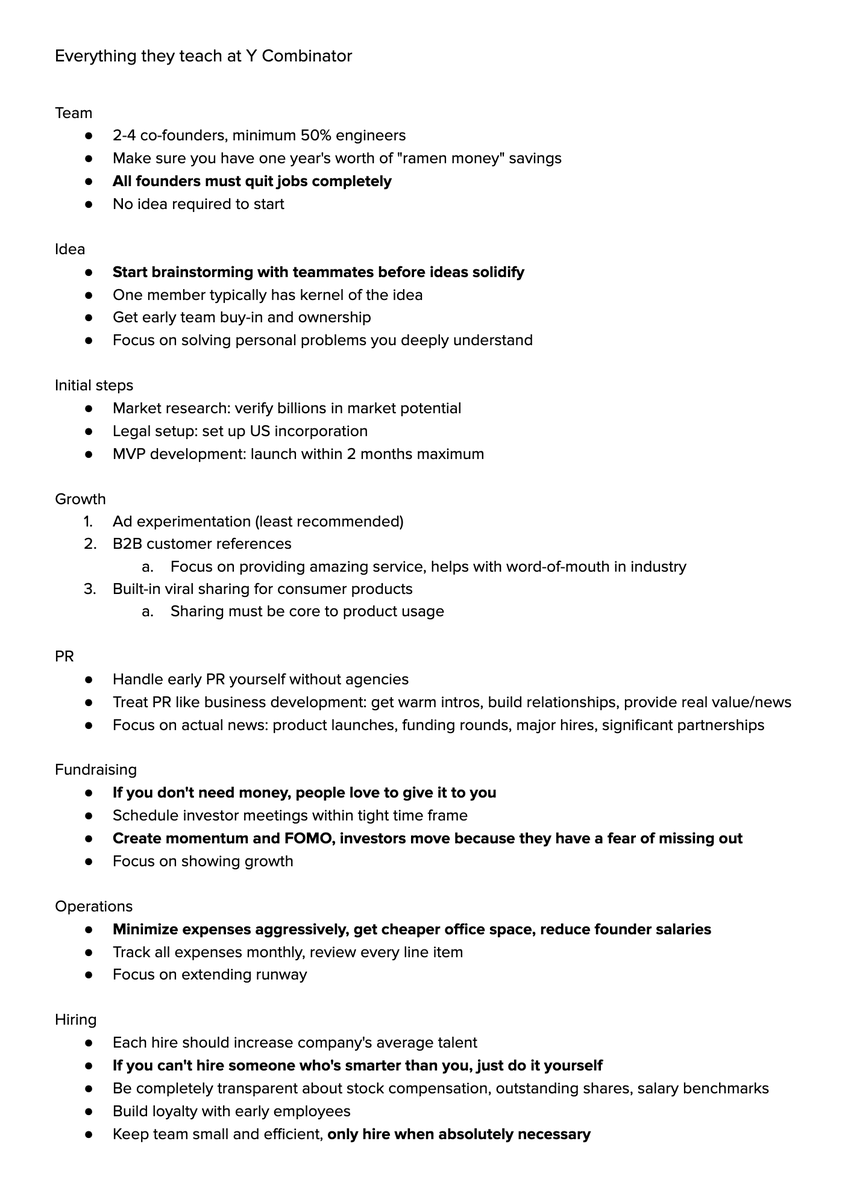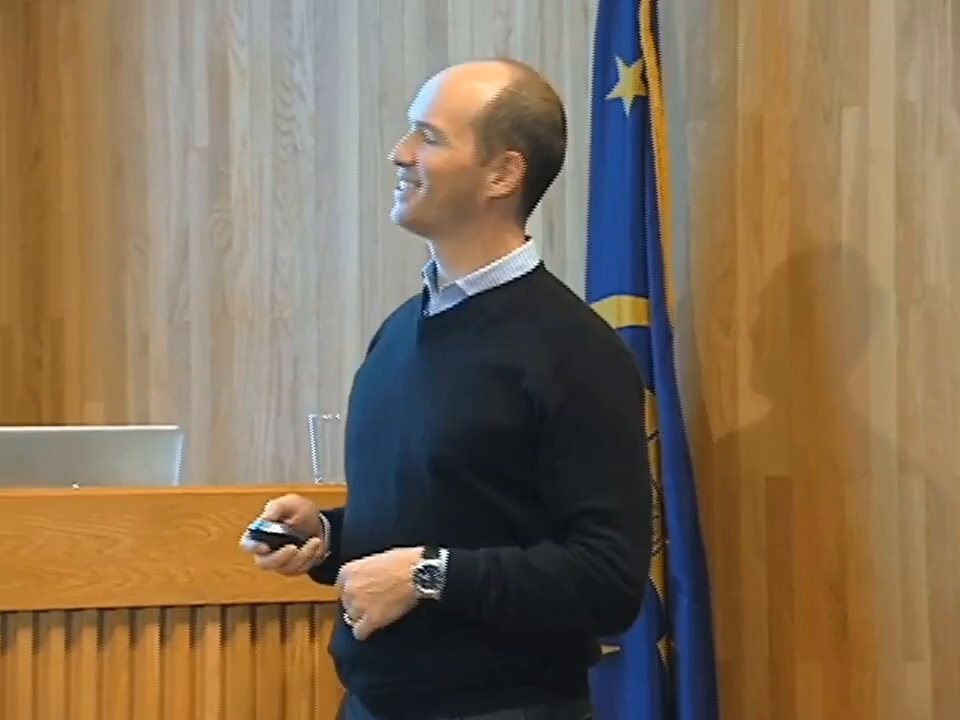| | | | | | Scale globally with Paddle. | | Self-serve software is global by default. But selling to every country is complicated. That’s where Paddle comes in. | They manage payments, sales tax, and compliance on every transaction around the world, so you can focus on what you do best: building a great product and serving your customers. | As a Merchant of Record, Paddle makes it easy for SaaS and digital product companies to sell anywhere. | Wherever you want to take your business, go there with Paddle. | | Interested in sponsoring these emails? See our partnership options here. |
| |
| | |
| | HOUSEKEEPING 📨 | Howdy!—and welcome back. I’m pretty excited to say that I have been busy cooking up one of some of our biggest posts that we will be releasing over the next few weeks, starting with a cracking post on the story of Vanta set to go live this time next week. | We also have deep dives on how Attio do design (they just released some absolutely bonkers AI attributes for the CRM this week), another story about the behemoth that is Paddle, and also some more guest posts from beehiiv, Tracksuit who is setting the world on fire over in Aus, and of course, my baby—Athyna.
Also, I am throwing it out there that I am open to suggestions. Chances are if you reply to this email and say; “Hey Doc, can you write the story of X,” I’m going to be able to go ahead and do it. |
| |
| So hit me up! For today though, we have a great little piece of what it means to be a CEO. No one really teaches you how to lead, and you will likely need a lot more than this little 2,000 word blog, but I have at least solidified in my own mind what the job of an executive is. Anyway, hope you enjoy it! |
|
| | TL;DR ME 🙄 | The role of a CEO has changed over time: From the first leaders of industry in the United States, to the rise of the celebrity entrepreneurs. Your role will too. And that’s totally ok. There are five key aspects to the job of a CEO: From setting the strategy and raising the money. To building a team of all-stars, communicating at a high level and holding their people accountable. Creating a vision when hiring is key: The great job ad in history called for “small wages, bitter cold, long months of complete darkness, constant danger, safe return doubtful”—and it had 5000 applicants. Micro-management may be a little too oft-maligned: Steve Jobs, Brian Chesky, Seinfeld and more were chronic micro-managers. And brilliant at what they do.
| BUSINESS STORY 🗞️ | The Job Description Of A CEO | The job title of Chief Executive Officer carries weight. The CEO is the head honcho, the boss, the leader of the organisation. But what is a CEO and what do they do—and why does no one teach you how to be one?
Today, we will attempt to unravel the mystery of the chief executive. It’s more art than science and it evolves over time for every individual. But as you progress it should take a little more shape. Let’s dive into it. | | The history of the chief executive | The concept of a CEO dates back to the beginning of the industrial revolution in the 19th century. This period in history saw rapid industrial growth and a movement from small, family-run businesses to the larger, more structured organisations we know today. | One of the first uses of the title ‘Chief Executive Officer’ was in the United States in the 1850s, with the Pennsylvania Railroad.
Samuel Vaughan Merrick was the first President and CEO of the railroad and therefore the first to don the title. Although this was the oldest dated use of the term, the use of CEO didn’t take off until the 1900s. |
| |
| CEOs for most of the last century were behind the scenes. Not acclaimed figureheads of industry like today. The first real cases of a celebrity CEO happened in the late 20th century with the likes of Chrysler’s Lee Iacocca and the controversial Jack Welch from General Electric. CEOs began to be seen as celebrities in their own right on the strength of not only their acumen, but their personalities and leadership styles. | That brings us to today. Today a CEO needs to be truly multi-faceted to succeed. From navigating international markets, managing global teams, fostering culture and more. The CEOs role is every increasingly demanding. And for startup founders, it can be challenging to know where to start. | Do you know your job description as a CEO? | | The role of a CEO today | I found a tweet embedded in the blog of a friend of mine, Startmate CEO, Michael Batko, that really struck me. The tweet, penned by Bilal Zuberu, outlined the five core jobs of a CEO. It wasn’t until this moment that I understood my role. Or what my role should be. |  | Bilal Zuberi @bznotes |  |
| |
Five core jobs of a CEO:
1. Nail down strategy for company
2. Deliver capital to pursue that strategy
3. Build team to execute
4. Communicate the hell out of company strategy (internally and externally)
5. Hold people accountable. |  Matthew Laffer @matthewlaffer Matthew Laffer @matthewlaffer
@bznotes Any highlights you can share? |
| | | 12:36 AM • Apr 9, 2019 | | | | | | 5.02K Likes 1.02K Retweets | 60 Replies |
|
| Since seeing this tweet, the CEO job description has been burned into my retinas. It’s now something I actively work towards as CEO of Athyna and it sits daily on my laptops background. Let’s take a look at Bilal’s definition and break them down one by one. | 1/ Set the strategic direction | Ok, so we start with strategy. Mission, vision, values. Short term tactics, OKRs, longer term efforts—big hairy audacious goals. The best way to start to flex your strategy muscle is simple: read. Read everything, from everyone, that has come before you. Books, investor letters, timeless blogs.
You don’t just found a company and understand how to set a strategy. You learn by trying, and failing. You learn by learning. The difference between good strategy and great strategy and is difference between a good business and an IPO and the difference between good strategy and poor strategy is life and death. |  | Strategy in Ancient Greece. |
| Read, learn, network. Ask questions. Study those around you. If you are constantly building your cerebral horsepower, you are setting yourself up for success. | 2/ Have enough money to execute | Next, is delivering capital to pursue that strategy. Or more commonly know as; not dying. Seems simple, but depending on the game you are playing, it can be incredibly challenging. | Bootstrapping an agency, cool, you probably don’t need that much money. Building a deep-tech startup, not as cool. You are going to need a lot of money to survive and execute. Step one here is knowing which game you want to play and reverse engineering how much capital you are going to need to get there. | | Remember, staying alive doesn’t always mean being profitable. It can mean just being default alive. As long as you know your positon, and you have a plan to stay alive, you are doing your job here. | 3/ Hire all-star team | Now that we know we are alive, we need to figure out how we can execute on the company goals. Before founding a startup, most would think hiring would be easy. It’s not. And not only is it difficult, it’s highly competitive and the early hires you make will also shape the culture, or lack-thereof, inside your organisation. | The secret of my success is that we have gone to exceptional lengths to hire the best people in the world. | | | | —Steve Jobs |
|
| How do we address hiring well. There are a few ways, actually. First you need to build a brand, and then foster and incredible culture. Build a great brand, and you will have All-Star talent kicking your door down to work with you. Have a great culture and that All-Star talent will be motivated to do their best work. Of course you won’t be great at hiring right away so try headhunting, lean on your network, build external partnerships, all while polishing that employer brand and maintaining your culture. | Put simply—build out a team of motivated All-Stars and you can overcome most challenges put in front of you. |
|
| | | | | | Streamline compliance, focus on growth. | As a startup founder, finding product-market fit is your top priority. But landing bigger customers requires SOC 2 or ISO 27001 compliance—a time-consuming process that pulls you away from building and shipping. That’s where Vanta comes in.
Join over 9,000 companies, including hundreds of Y Combinator-backed startups like Supabase, Newfront, and Fern who streamline compliance with Vanta’s automation and trusted network of security experts.
Try them out so you can spend less time on compliance and more time growing your business. | | Interested in sponsoring these emails? See our partnership options here. |
| |
| | |
| | “The greatest job ad ever written” | The award for histories greatest job ad has been held by Sir Ernest Shackleton since sometimes ~1907. The ad, which unfortunately has since been partially debunked, was said to have read the following. | | “MEN WANTED, for hazardous journey, small wages, bitter cold, long months of complete darkness, constant danger, safe return doubtful, honour and recognition in case of success.” |
|
| Whether or not this ad did ever exist is irrelevant. The ad was first cites in The 100 Greatest Advertisements 1852-1958, written by Julian Watkins in 1959 and in 1999, Campaign ranked it 86th in its selection of the 100 best ads of the century.
The infamous ad was said to have had 5000 applications from Londoners scrambling to join Shackleton’s expedition. Why?—Because Sir Ernest filled them with ambition. Which leads us right into our next point. | 4/ Scream it from the rooftops | Another key role for a modern leader is how you communicate—internal and externally. Internal comms range from company All-Hands events, pitching investor and keeping them updated, board communications and more. Whereas external communications means taking your companies mission, vision and values and screaming them from the rooftops. |  | Wernam Hogg’s best boss. |
| It’s also becoming more and more important to have a strong personal—or in this case let’s call it—founder brand. You need to be the chief storyteller, evangelist and impression pusher for your entire organisation. Today with some hard work, a little elbow grease and a bit of copywriting skill, you can do it.
Words matter you see. They have the ability to move mountains, or more tangibly, change the world for better or worse. Martin Luther King and Adolf Hitler will never be forgotten, again, for better or worse, because they were able to sway people with their words. Learn how to wield yours wisely. | 5/ Maintain culture & accountability | And finally, you need to hold people accountable. Set high standards for etiquette, lead from the front and don’t allow those standards to slip. The fastest way to turn a team filled with A-players is to surround them with C-players. This is the unglamorous part of the role. This is the part that hurts. |  | How to Fire Employees Gracefully | Matt Mochary | The Tim Ferriss Show podcast |
|
| But it’s incredible powerful for a leader to set the standard, hold their team to that standard and also to, on occasion, make tough but decisions to maintain those standards. | The maligned power of mico-management | A tangent here about management and accountability. And that is that there is a part of management that is often maligned but also employed to by some of the greatest leaders. Some of the leaders that we know today as household names. What do Elon Musk, Jeff Bezos, Steve Jobs, Jerry Seinfeld and Brian Chesky have in common. They have long reputations as chronic micro-managers.
Seinfeld was a cultural phenomenon. Early evening viewing for every family around the world for a decade. How were they so successful; “The show was successful because I micromanaged it—every word, every line, every take, every edit, every casting”, Jerry Seinfeld would go on to say. |  | The puffy shirt. |
|
|  | Executive Producer: McKinsey. |
|
|
| But micro-management doesn’t mean being over your team’s shoulder every second of the day. It means, being in the details. Reddit was ablaze recently after Brian Chesky’s recent interview on Lenny’s Podcast extolling the benefits of micro-management. | Although freedom and autonomy are keys to build a great culture, it is becoming more and more en vogue for leaders to be back in the weeds with their teams. And the best leaders know their company, and the details, inside and out. | Finding your role | What is true today and always will be is that the role of a CEO is ill-defined. In the early days you will be wearing multiple hats. Founder sales, recruitment, answering support tickets. As you grow however, things slowly begin to flatten out to a point where you are focus more on the five roles listed above; strategy, capital management, hiring, communications and accountability. | | Once you reach this point it turns to execution. Being the best you can be at highly focussed, critically important set of tasks. Best of luck with it. You got this! | Extra reading | | And that's it! You can follow me on Twitter and LinkedIn and also don’t forget to check out Athyna while you’re at it. |
|
| | BRAIN FOOD 🧠 | Something really cool that I caught last week was this episode on the Dwarkesh Podcast with Satya Nadella. Microsoft's been making some major breakthroughs lately, and hearing them discuss everything from the economic impact of AI to their new advances in quantum computing was pretty fascinating. |  | Satya Nadella – Microsoft’s AGI Plan & Quantum Breakthrough |
|
|
|
| | TWEET OF THE WEEK 🐣 |  | Ben Lang @benln |  |
| |
Everything they teach at YC in one page: | |  | | | 8:23 PM • Jan 23, 2025 | | | | | | 4.15K Likes 409 Retweets | 38 Replies |
|
|  | Startup Archive @StartupArchive_ |  |
| |
Ben Horowitz on the two things every successful technology startup must do 1. Build a product that improves how some large group of people does something by 10x. “You have to build a transformational product. There is no way to build a great new company without a great product…… x.com/i/web/status/1… | |  | | | 5:00 PM • Jan 23, 2025 | | | | | | 481 Likes 64 Retweets | 6 Replies |
|
|  | Bill Kerr @bill_kerrrrr |  |
| |
Me after putting my 5th witty meme inside of a single newsletter edition. lnkd.in/dhQtg84z | |  | | | 10:49 PM • Feb 26, 2025 | | | | | | 0 Likes 0 Retweets | 0 Replies |
|
|
|
| | TOOLS WE USE 🛠️ | Every week we highlight tools we actually use inside of our business and give them an honest review. Today we are highlighting Attio—powerful, flexible and data-driven, the exact CRM your business needs. | beehiiv: We use beehiiv to send all of our newsletters.
Apollo: We use Apollo to automate a large part of our 1.2M weekly outbound emails.
Taplio: We use Taplio to grow and manage my online presence. |
| |
| See the full set of tools we use inside of Athyna & Open Source CEO here. |
|
| | | | | | P.S. Want to work together? | | | That’s it from me. See you next week, Doc 🫡
P.P.S. Let’s connect on LinkedIn and Twitter. |
|
|
| |
| | |
|
|



























